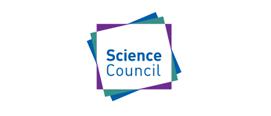Skeletal and muscular systems, including biomechanics
Engineering is perhaps not what immediately springs to mind when looking at this topic, but an understanding of how the skeleton and muscles work is at the centre of much cutting edge research and development, from prosthetics to bionics and robotics. These areas can provide an excellent context for learning about the skeleton and muscles, introducing careers that students may not have come across and extending learning beyond being able to name parts of the body and their function.
These resources are linked to the following statements in the curriculum:
• The structure and functions of the human skeleton, to include support, protection, movement and making blood cells
• Biomechanics – the interaction between skeleton and muscles, including the measurement of force exerted by different muscles
• The function of muscles and examples of antagonistic muscles.
Visit the secondary science webpage to access all lists: https://www.stem.org.uk/secondary-science
Whilst this list provides a source of information and ideas for experimental work, it is important to note that recommendations can date very quickly. Do NOT follow suggestions which conflict with current advice from CLEAPSS, SSERC or recent safety guides. eLibrary users are responsible for ensuring that any activity, including practical work, which they carry out is consistent with current regulations related to Health and Safety and that they carry an appropriate risk assessment. Further information is provided in our Health and Safety guidance.
Future Morph: Physiotherapist *suitable for home teaching*
This careers video can be used to introduce the topic and provide context to learning about the skeleton and muscles. Bristol City Football Club physiotherapist Nick Dawes talks about how he became a physiotherapist. He describes the qualifications and training needed to become a physiotherapist.
Students could be asked to discuss what other areas a physiotherapist could work in and what is meant by physiology. How many careers can they think of which require a knowledge of the human body?
Nature Reinvented *suitable for home teaching*
These activities, films and lesson ideas can be used to provide a context to learning about the skeleton and muscles. Rather than simply naming bones and muscles, students can find out how research into how we move and the forces involved is leading to increasingly sophisticated prosthetic limbs.
Monitoring Health on the International Space Station
This short clip could provide a lovely introduction to a lesson on the structure and function of bones. On the International Space Station, the astronauts are investigating the effect of microgravity on their bones.
After watching the clip, students could be asked why this research is important, leading into a discussion on the function of the skeletal system.
Antagonistic muscles in chicken wings
This is a great way to investigate how muscles work in antagonistic pair to move a limb, in this case a chicken wing. By carefully removing the skin, students should be able to identify the biceps and triceps. By pulling on each muscle in turn, they can see how the wing moves.


